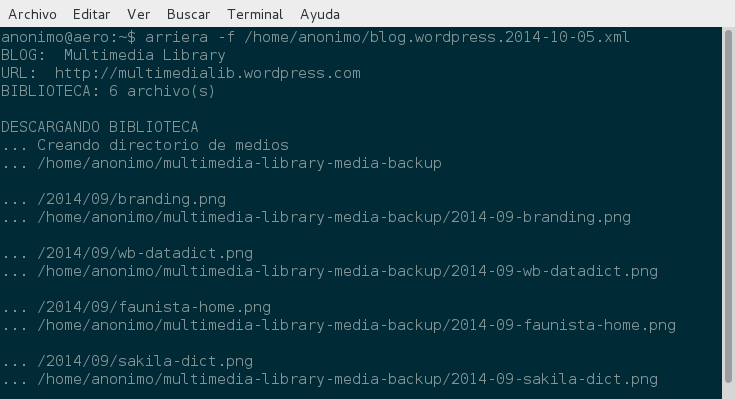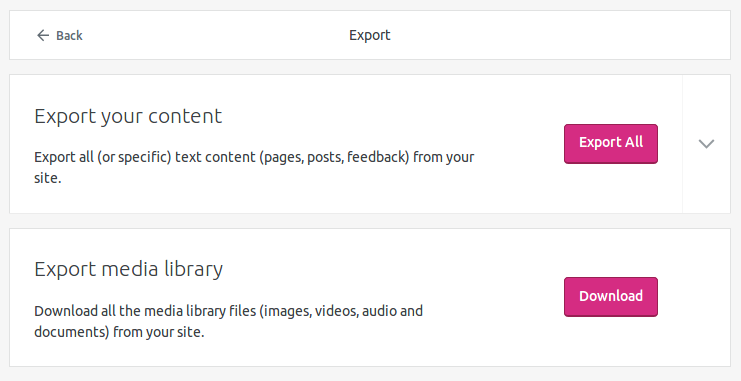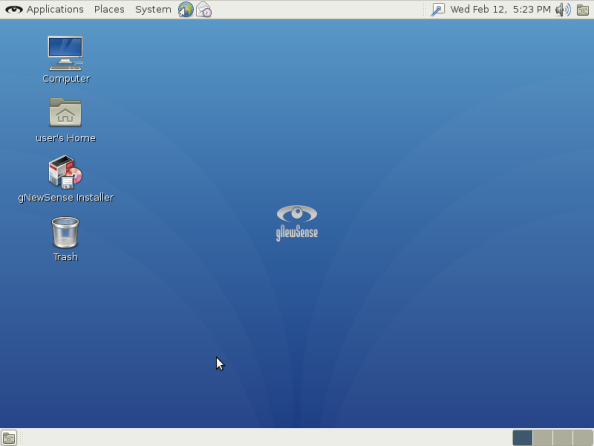5 Artifacts Retired from Service
I recently decommissioned some of my artifacts: Arriera, Galaxia, Aurora, gNewSense and Miro. In this entry I explain why and recommend replacements for them.
These are five of my artifacts that are no longer necessary or that became outdated.
Arriera

Figure 1. Screenshot of Arriera downloading a media library from WordPress.com.
Arriera is an console application available for Debian-based systems that allows you to download your media libraries from WordPress.com blogs.
I wrote this application in 2014 to scratch my own itch, but other people had been experiencing the same problem I faced and wrote to WordPress.com's help system to find answers. [1] For several years, WordPress.com allowed you to export blogs to XML files that contained information about posts, pages, comments, categories and other text-based contents of your blogs, but, surprisingly, there were no option to export the files of your media libraries which contain the images, videos and other documents associated with your posts. So you could not really export your blogs fully if you wanted to migrate somewhere else.
Reason of decommissioning. I recently found that WordPress.com added the option to export the media library of the blogs they host (see Figure 2). For this reason, Arriera is no longer necessary. I don't recommend using it anymore.

Figure 2. Screenshot of the new media library download option in WordPress.com.
gNewSense

Figure 3. Screenshot of gNewSense 3 desktop.
gNewSense is a Debian-based, libre operating system that follows the GNU project guidelines for free software distributions (see GNU FSDG).
I don't remember in what year I started working in gNewSense, but the reason, if I recall correctly, was that it was a libre distribution supported by the GNU project and that it derived directly from Debian and not from Ubuntu. Deriving from the latter, I thought, implied more work to remove non-free parts of the system and references to them.
In gNewSense I worked for version 3 of the system in parts related to the appearance of the system and the website. For version 4 I did a similar work, but I didn't finish it as planned because I left the project due to a change of mind about copyright laws and licenses. I developed the resulting artifacts of my work for the two versions of the system in two personal projects I descibed as "visual themes from gNewSense GNU/Linux":
Reason of decommissioning. Both version 3 and 4 of gNewSense, for which I developed Galaxia and Aurora, respectively, probably reached end-of-life (EOL) (based on the EOL dates for the versions of Debian from which gNewSense was made):
- gNewSense 3 (based on Debian 6): EOL February 29, 2016.
- gNewSense 4 (based on Debian 7): EOL May 31, 2018.
gNewSense website has been outdated for several years, and the project does not seem to have enough human resources to follow Debian's pace. While the project does not seem to be formally abandoned, I don't know if there are any plans to work on gNewSense 5, nor what version of Debian it would be based upon (current stable version of Debian is version 9, and version 10 will probably be released this year.).
Personally, I don't recommend using gNewSense anymore. I use Debian instead and hope, in a year or two, to use the GNU operating system that you can install and manage with GNU Guix, another project I contribute to once in a while.
Miro
Miro is a desktop application to play and download music and videos from the Internet.
I worked in Miro several years ago, when I didn't know the difference between libre and open source. I translated The Miro Guide into Spanish. The Miro Guide was a website that Miro, the desktop application, used to display all the videos and TV channels available around the world. I think that what grabbed my attention from this project was the decentralization of media channels and the independent videos.
Reason of decommissioning. Miro is not in development anymore. The software does not get updates and the website has many broken links. The last stable version was version 6 and was released in April, 2013.
There might be applications and services around PeerTube that could serve as replacements for Miro, but I'm not sure.
| [1] | For example:
|
Related topics: